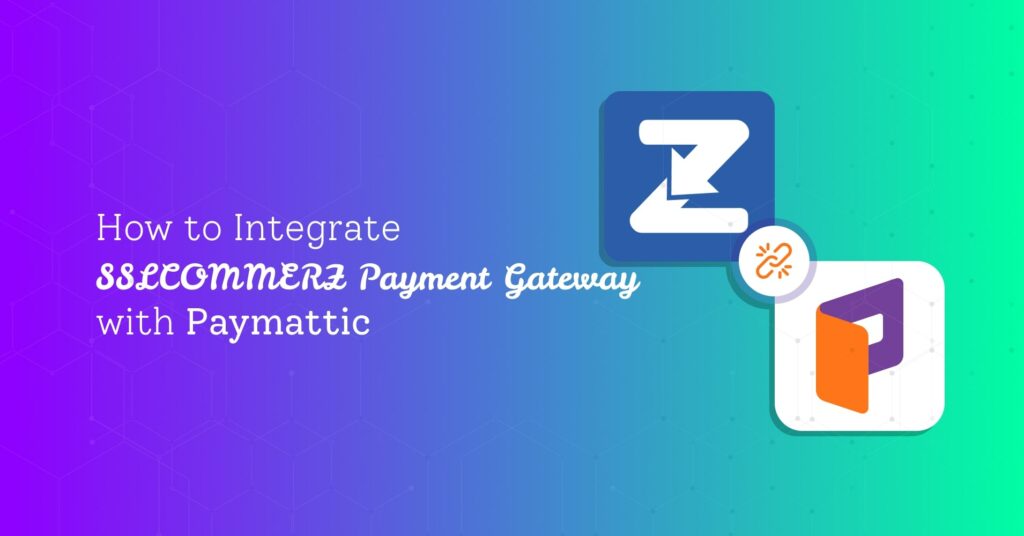How To Write A Fundraising Report Card?
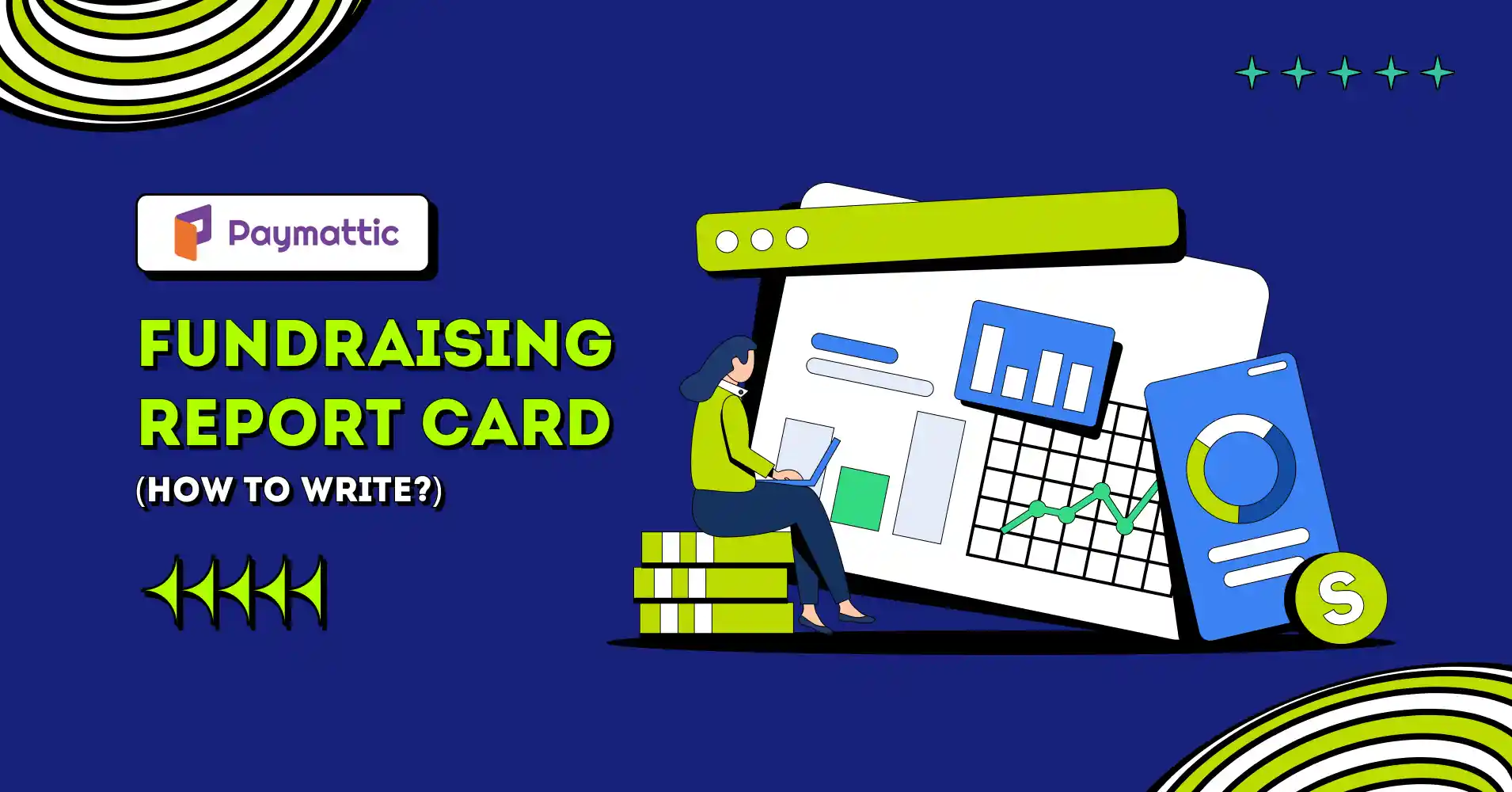
If you have landed on this article, you are definitely struggling with creating a fundraising report for your non-profits. To be honest, it’s not an easy task.
But if you know the donation metrics to count, it gets easier than you think.
In this article, I’m going to show you which metrics you should cover in your fundraising report card.
Also, I’ll talk about some different types of fundraising reports for your non-profits. And the importance of a donation report card.
So let’s dive right into it.
What is a fundraising report?
A fundraising report is a documented overview and analysis of fundraising campaigns or similar initiatives.
Fundraising reports usually include a financial summary, fundraising expenses, revenue, donor analysis, campaign performance metrics, and future recommendations based on the data.
Fundraising reports are crucial for non-profits and entities that launch fundraising events. It measures the campaigns’ performance. And it also helps organizations take the necessary steps to get more benefits from future events.
A fundraising report can be of various types. It can be image-based, graph-based, or purely numerical data-based. But the main objective is to get the fundraising performance metrics as clear as possible.
And to make logical improvements over time.
The importance of a fundraising report card
Your organization must keep its fundraising summary report well-sorted. The effectiveness of a fundraising campaign depends on the report card.
Here are some reasons why a fundraising report card is absolutely necessary for your fundraising endeavors:
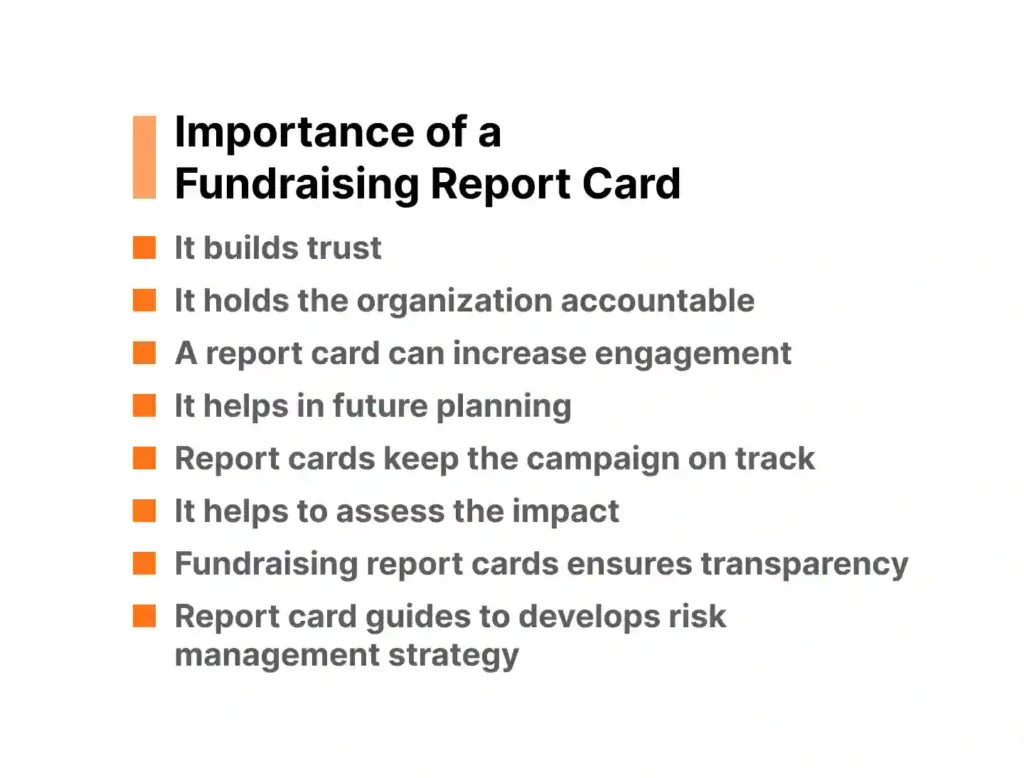
- A fundraising report card provides a clear picture of where the money comes from and how it’s used. It ensures transparency in financial activities.
- It holds the organization accountable for managing the money it gets from donors. It shows how the fund is being distributed and to whom.
- The report card helps in future planning by highlighting successful fundraising strategies.
- As the report card shows the donors or stakeholders the ins and outs of donated money management, it builds trust. And it gives a confidence boost to donors for further donations.
- Fundraising report metrics keep the donation campaigns on track. It’s easy to get sidetracked, as campaigns can go on for a long period of time. Report cards always give a reality check to donation campaigns.
- A fundraising report card can be a communication tool between donors. Not only that, but it also works as an engagement medium for campaign members.
- It shows how it’s impacting the specific problem it’s supposed to solve. Moreover, it helps assess the impact of the total fundraising campaign and match it with the primary goal.
- A report card helps in developing risk management strategies for an event. It helps determine what to do if something breaks apart during the campaign.
Different types of fundraising report cards
Like most events in life, you can’t determine a universal fundraising report card that includes all the KPIs for nonprofits. But you can sort them into some categories.
Here are some different types of fundraising report cards:
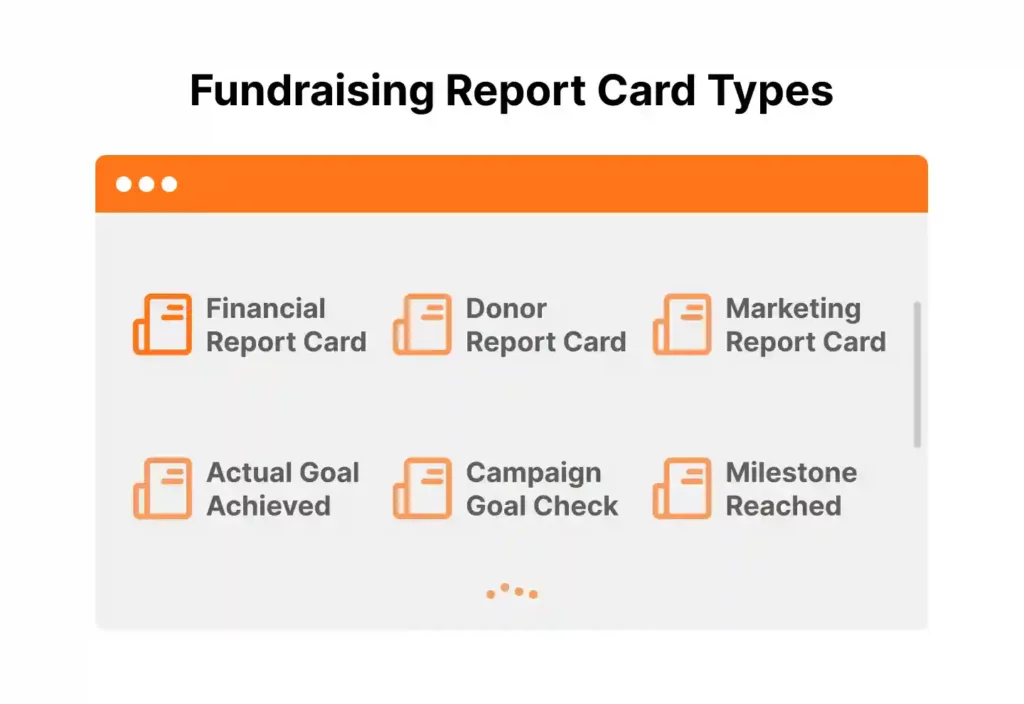
Financial report card:
A financial report card for a non-profit includes fundraising metrics of money transactions. As you are running a non-profit or similar type of organization, managing the money you get and distribute is a huge deal for you.
These reports include the total funds you raised, fundraising expenses, revenue sources, and all the different ways you are distributing the donated money.
Donor report card:
These types of fundraising benchmarks give you donor-related data for your campaigns. As you are handling people, mutual relationships between you and your donors are vital.
A donor report card includes your donor retention rates, new donor acquisitions, and average donation size. Not only that, but also the potential strategy gaps to attract more donors for your upcoming campaigns.
Marketing report card:
A marketing report card for fundraisers covers all the sectors relating to outreach and event organizing. Non-profits’ success in fundraisers depends on how many people their campaign could reach. And this is the portion where most non-profits suffer.
Marketing report cards show data for social media campaign success, email open rates, conversion rates, and cost per participant for your fundraising campaign. Marketing data also covers donation webpage visitors, “Donate” button clicks, and checkout page visits.
These are some of the most important fundraising metrics to track. But you’ll also have to track important data like –
- Campaign goals vs. actual goals achieved
- Donation trends over time
- Donor cultivation programs
Subscribe to Our Newsletter
Join the exclusive crowd for trending offers, product updates, and advanced fundraising tips.

Fundraising report card for your nonprofit (How To Write?)
In the upper section, I’ve talked about some important fundraising metrics you should consider for your fundraising report card. But you might wonder how to write a fundraising report for your programs. And which elements to include.
I am going to show you which data is absolutely necessary for your fundraising report card. Also, based on these data, you can easily calculate fundraising KPIs for your non-profits.
We are going to use a fundraising report dashboard from a well-known WordPress donation plugin, Paymattic.
Ready to get started?
Experience WordPress payment and donation like never before. Try Paymattic now!
1. Total revenue:
The total revenue of your fundraisers means the cumulative revenue you earned over a period. This is the total amount of money given by your donors. Total revenue should be listed in your fundraising database.
And it’s different from your net revenue. In business, you might consider net revenue by deleting the allowances, returns, and discounts from the gross revenue you get. But in donations, you don’t do discounts or allowances.
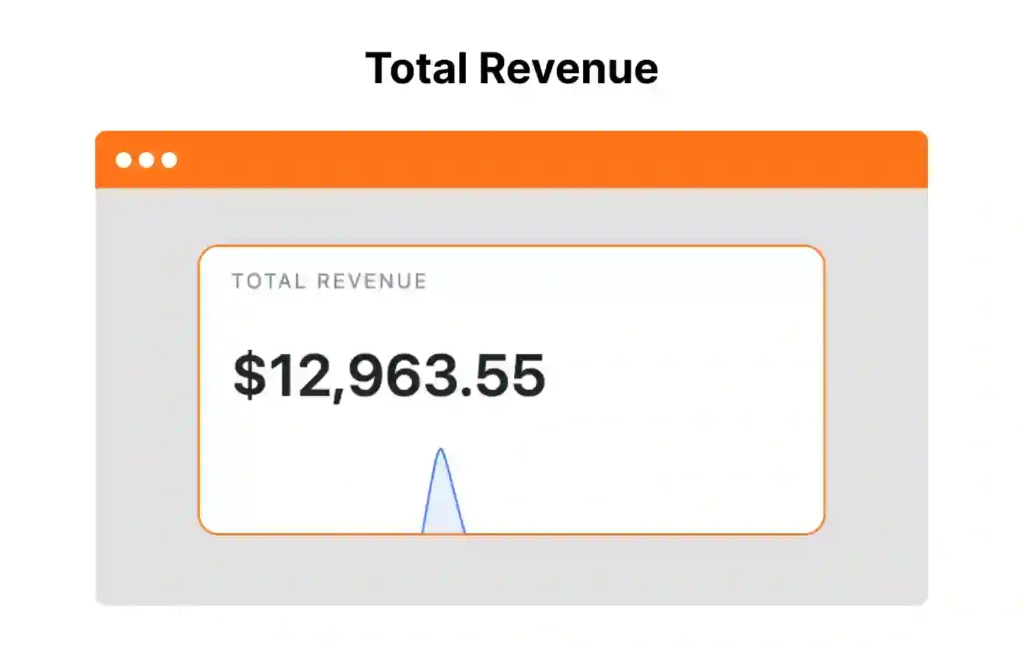
2. Visual donation data (Revenue per period):
You must include some visual donation data in your fundraising report card. Well, how do you create it?
There are many factors in how you can sort this visual data. For example, here I’ve shown donation data according to the given time period. You can also call it revenue per period.
Make sure you make a nice, detailed graph explaining the donation data you are working on. You can use Google Sheets or Microsoft Excel to create some nice, clean donation data for your campaigns.
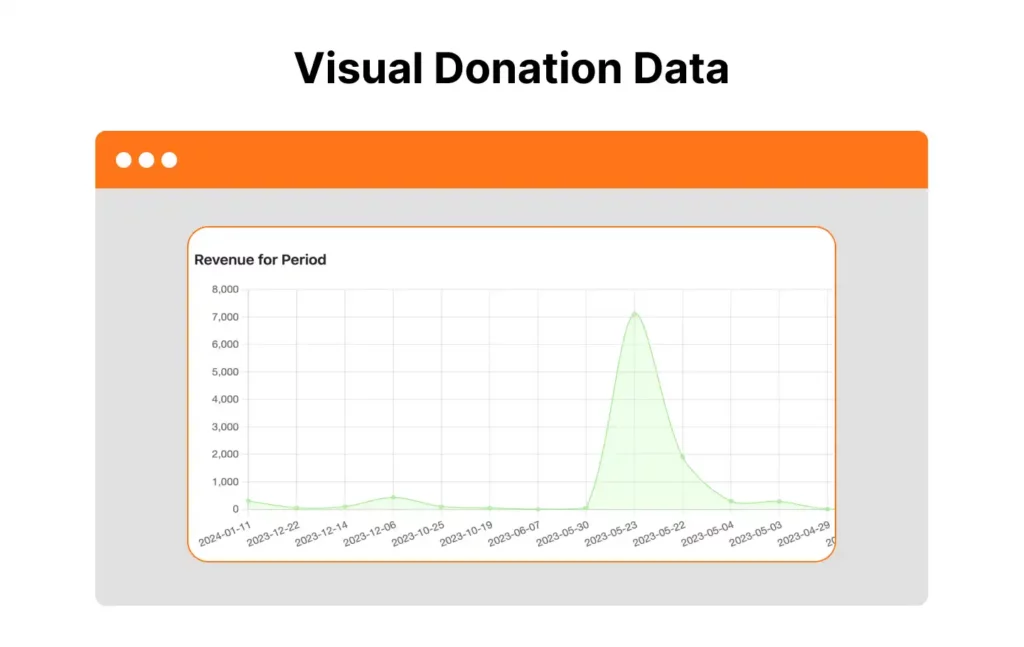
3. Donation breakdown:
Write a donation breakdown summary for the fundraising report card. If you are running an online fundraiser on your website, then this is crucial. Include important data like donation dates, payment status, number of submissions, net donation, and currency.
P.S. If your donors are from a different country than the one you live in, then you need donation software that supports a currency switcher. In this way, the donation will be automatically switched to your preferred currency.
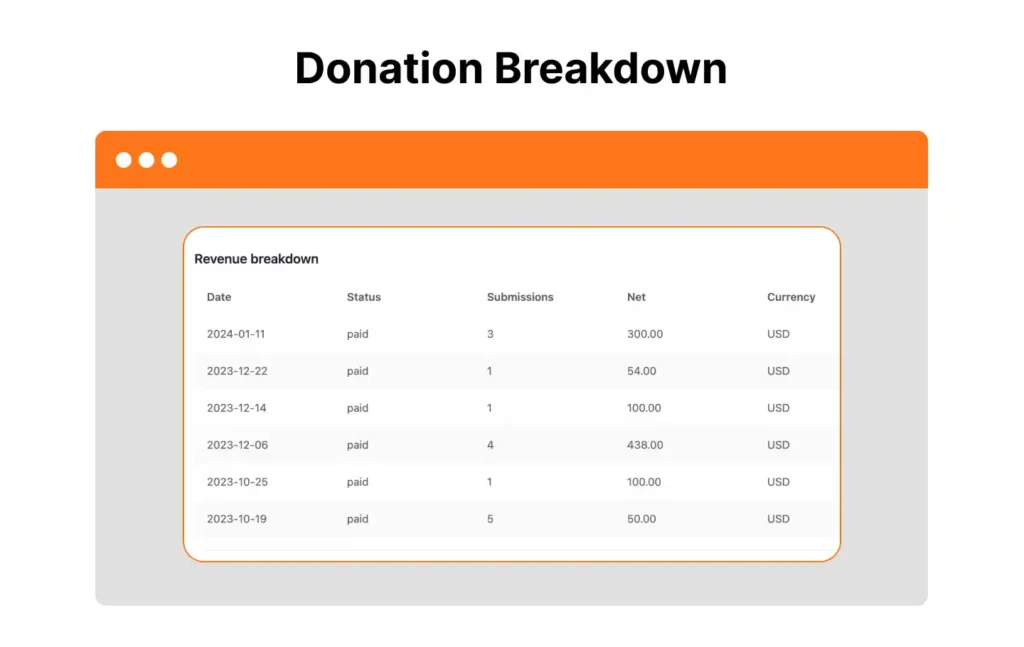
4. Payment methods:
You must showcase the payment methods your donors used when donating on a report card. What does the payment method mean? It means the medium they used when donating the money. It can be cash or it can be the payment card they used.
Also, when you are running online donation campaigns, these matrics can cover the payment gateways your donors use. This is how you get to know your donors and their behavior.
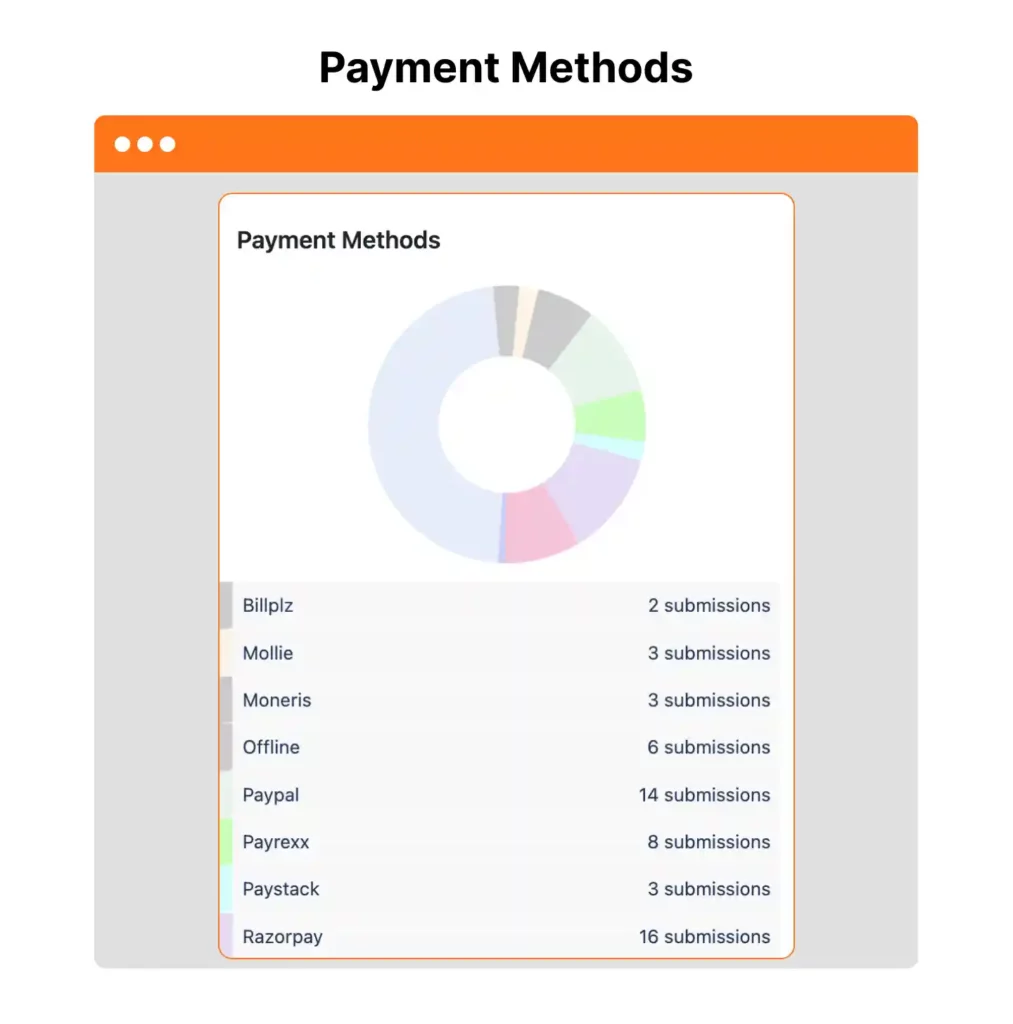
5. Recent donation data:
You should always keep track of your recent donations. It gives you real-time data for calculating KPIs for your non-profit.
Recent donation data should include information like who donated to your cause and how much money they donated. Also, it should cover the basic information. For example, if it’s a recurring donation or a one-time payment.

6. Donor profile / donor database:
You should create a donor profile report for your campaigns. It can show necessary information about every single donor. Information like when his or her first payment was made, how many times they donated, their currency, and donation types.
For example, here is a screenshot of donor history from Paymattic.
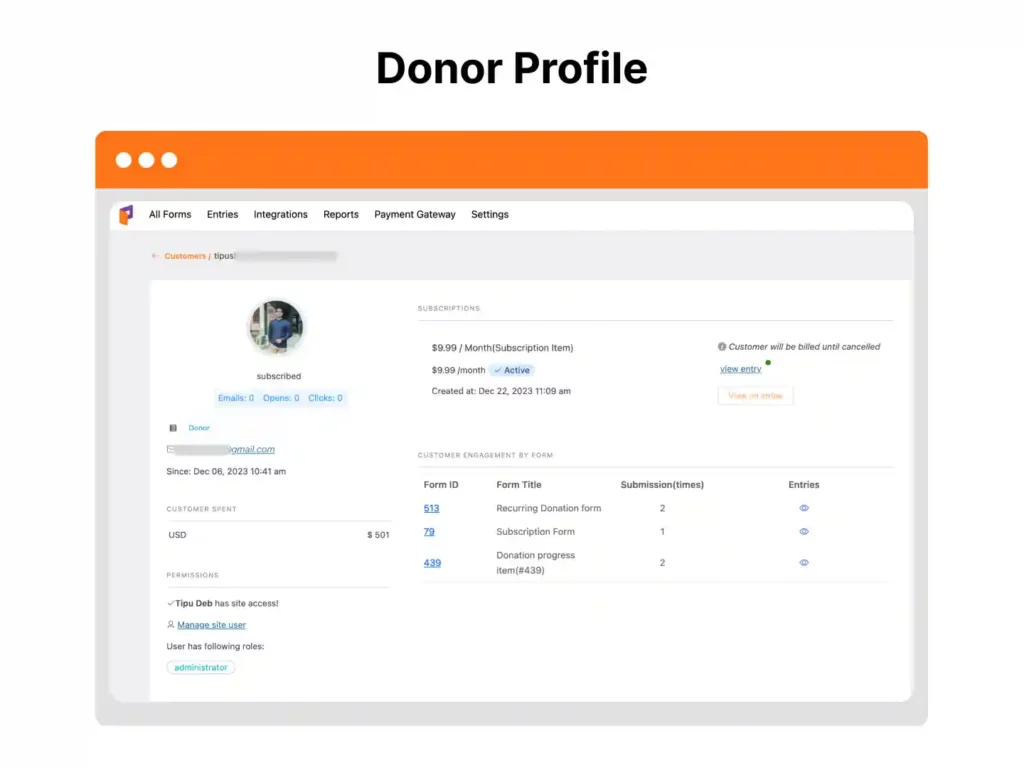
The bottom line
Now that you know which data is a must-have for your fundraising report card, it’s going to be an easy ride for you. You already know how to track fundraising donations. Now all you need is a tool that does all the calculations and keeps counts for you.
If you are a WordPress website user, choose your donation plugin.
I suggest you go for Paymattic. A good donation plugin should keep the books of your donations. And from these data, you can calculate your growth versus expectations without any hassle.
Thank you for reading. And best wishes for your upcoming fundraisers.





